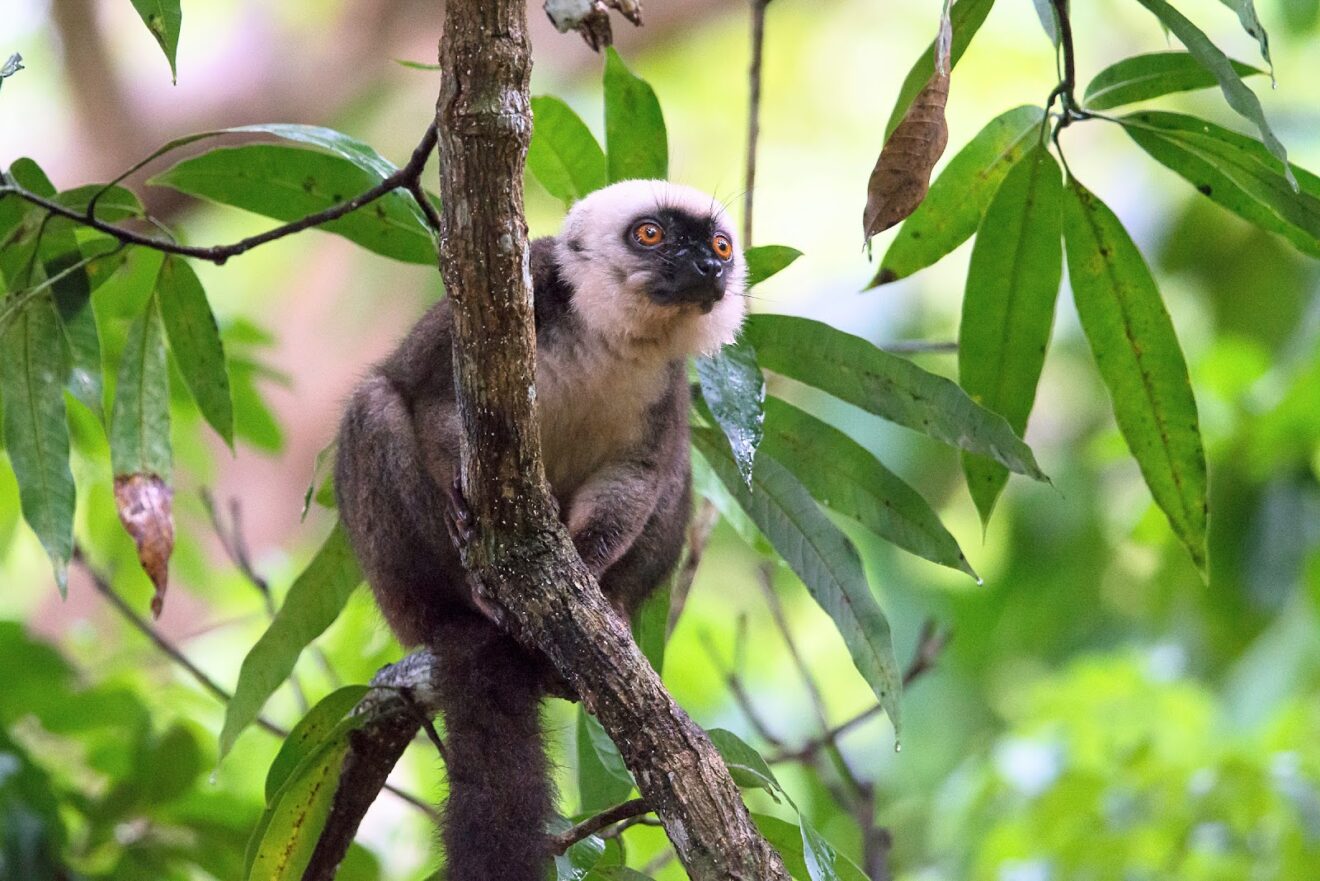Masoala is Madagascar’s largest national park and arguably the most beautiful park in all of Madagascar. Masoala is found in the northeastern part of Madagascar south of Antalaha and a visit to this magnificent rainforest is a must for anyone who is serious about wildlife. To get to Masoala one needs to go two days overland to Maroantsetra or you can also charter a plane. The best place to stay is without a doubt Masoala Forest Lodge, which has excellent hiking trails, but for those who are in search of deep exploration, it is necessary to set up an expedition in which you will camp and be assisted by the staff of the national park.

Madagascar’s mammals are unusual and enigmatic. One might expect them to be similar to those of nearby continental Africa, but that is far from the case. Madagascar has no herds of grazing animals, no large carnivores like cats or dogs, and no great apes or monkeys. Smaller, less familiar creatures inhabit the island instead. In the forest canopies lemurs take the place of monkeys; carnivores are represented by such oddities as the fossa and civets; while bizarre tenrecs and peculiar rodents scuttle through the undergrowth. Only five major mammal groups have found their way here: bats, lemurs, rodents, tenrecs and mongoose-like carnivores.
The origin of Madagascar’s mammals is a topic of great debate. Where did they come from? How did they get to the island? Which other mammals are their closest relatives? The application of new genetic techniques has greatly increased our understanding of the answers to these questions. Recently it has been discovered that the four main groups of terrestrial mammals: lemurs, rodents, tenrecs and carnivores, each originate from a single ancestor that colonized the island by chance millions of years ago.




The term lemur was probably coined by early biologists as the calls of some species were reminiscent of the cries of lemures, spirits of the dead in Roman mythology. Like us, lemurs are primates. They share some characteristics with early, ancestral primates, which the more advanced monkeys and apes subsequently lost. For these reasons, they are known as prosimians, a group that also includes the bushbabies and pottos of Africa, and the lorises and tarsiers of Asia. Unlike other prosimians, many lemur species are diurnal and live in family groups or troops in which the females are usually dominant (this is rare in primates). Another feature setting lemurs apart from their more intelligent monkey cousins is an acute sense of smell. Some species, particularly those more active during the day, have long, dog-like noses. Scents and smells are important in lemur society, being used extensively for communication, information-gathering and marking territorial boundaries.
By the time the earliest primates evolved, some 60 mya, Madagascar had long broken away from Africa and arrived in its current position. The Mozambique Channel would have presented a formidable obstacle for any animals to cross. Some theories have suggested early primates (and other mammals arrived via a series of now-submerged islands like stepping stones. But the weight of evidence is that lemur-like prosimians arrived on floating rafts of vegetation washed out to sea from mainland Africa. The few unwitting mariners that survived this voyage provided the founding stock that has evolved into the wonderful variety of lemurs we see today.
Masoala has a rich variety of animals and among the mammals the lemurs are the most iconic, while there are of course other unique animals such as tenrecs and the fossa. We can find ten different species of lemurs at Masoala such as the red ruffed lemur (Varecia rubra), the white-fronted brown lemur (Eulemur albifrons), the northern bamboo lemur (Hapalemur occidentalis), the fork-marked lemur (Phaner furcifer), the sportive lemur (Lepilemur scottorum), the woolly lemur (Avahi mooreorum), mouse lemur (microcebus), hairy-eared dwarf lemur (Allocebus trichotis), greater dwarf lemur (Cheirogaleus major) and the elusive aye-aye (Daubentonia madagascariensis).
Masoala Lemur Expeditions
There are ten lemur species at Masoala National Park. Some of these can be seen from the lodges, but for other species it is best to go deep into the forest where you can study them at ease to photograph. For those who wish, we can set up an expedition together with our local team of experts to look for lemurs and other mammals such as rodents, bats and carnivores at Masoala National Park.
As there are no hiking trails or accommodation available, this is done through camping. For these expeditions a special permit is needed from the park authorities. Your group will be assisted by a team of national park guides, porters and a cooking team.
It takes two days to go to Maroantsetra overland or it is possible to charter a plane. We will typically spend one – two days at Maroantsetra making sure all the paperwork is in order and all the gear is loaded up and everyone is briefed and prepped.
Please, send us an email with your enquiry, group size, project and also the desired duration you would like to stay at the forest and we will come back to you with a proposition and quote as soon as possible. Serious requests only, please.














